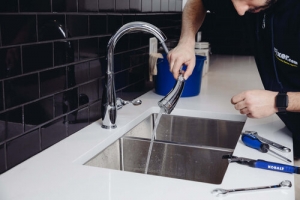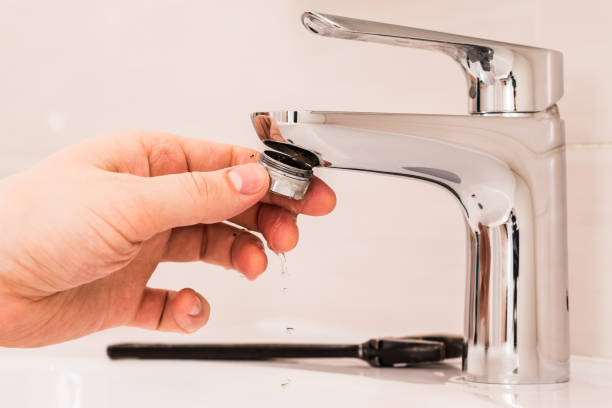Exploring the Importance of Resolving a Faulty Faucet
Exploring the Importance of Resolving a Faulty Faucet
Blog Article
Are you currently on the lookout for guidance on What Causes Leaky Faucets & How To Fix Them?

Dripping faucets might look like a minor hassle, but their influence surpasses simply the nuisance of the noise. From wasting water to sustaining unneeded economic expenses and health threats, neglecting a dripping tap can result in numerous repercussions. In this article, we'll explore why it's essential to resolve this common family problem promptly and successfully.
Wastefulness of Water
Environmental Effect
Trickling faucets contribute dramatically to water wastage. According to the Environmental Protection Agency (EPA), a solitary tap dripping at one drip per second can squander greater than 3,000 gallons of water each year. This not just pressures water resources but also affects environments and wild animals based on them.
Step-by-Step Overview to Taking Care Of a Dripping Tap
Devices Called for
Prior to trying to take care of a leaking faucet, gather the necessary tools, including a flexible wrench, screwdrivers, substitute components (such as washers or cartridges), and plumber's tape.
Typical Faucet Issues and Their Solutions
Identify the type of faucet and the certain problem creating the drip. Usual troubles include worn-out washers, corroded valve seats, or faulty O-rings. Refer to producer instructions or on the internet tutorials for detailed advice on fixings.
Financial Prices
Raised Water Costs
Past the environmental impact, dripping taps can blow up water expenses significantly. The accumulated wastage in time equates right into higher energy expenditures, which might have been avoided with prompt repair services.
Prospective Home Damage
Furthermore, prolonged dripping can cause damage to fixtures and surface areas surrounding the tap. Water accumulation can create staining, deterioration, and even structural problems if left unattended, leading to added repair work prices.
Health Problems
Mold and Mildew Development
The consistent presence of wetness from a trickling faucet produces a perfect atmosphere for mold and mildew and mold growth. These fungi not only jeopardize interior air top quality yet additionally pose health dangers, especially for people with respiratory system problems or allergic reactions.
Waterborne Conditions
Stationary water in trickling taps can end up being a breeding place for germs and other pathogens, increasing the threat of waterborne conditions. Impurities such as Legionella germs prosper in stagnant water, potentially bring about severe health problems when ingested or breathed in.
DIY vs. Professional Fixing
Benefits and drawbacks of DIY Repair
While some may attempt to deal with a leaking tap themselves, do it yourself repair work feature their own collection of challenges. Without appropriate knowledge and devices, do it yourself attempts can aggravate the issue or cause insufficient repair work, lengthening the problem.
Advantages of Working With a Professional Plumber
Employing a specialist plumber ensures that the underlying reason for the leaking tap is resolved effectively. Plumbing technicians have the expertise and equipment to diagnose and repair faucet problems successfully, conserving time and decreasing the threat of more damages.
Ecological Obligation
Private Contribution to Conservation
Taking duty for dealing with trickling taps lines up with more comprehensive efforts towards water preservation and ecological sustainability. Every individual's actions collectively make a considerable influence on preserving valuable sources.
Lasting Living Practices
By focusing on punctual repairs and adopting water-saving habits, individuals contribute to sustainable living practices that profit both existing and future generations.
Safety nets
Routine Upkeep Tips
To prevent dripping faucets, execute regular maintenance such as cleaning aerators, checking for leaks, and changing damaged components immediately. In addition, consider setting up water-saving gadgets or upgrading to more reliable fixtures.
Relevance of Prompt Services
Addressing leaking faucets as soon as they're observed stops further water wastage and prospective damage, inevitably saving both water and cash over time.
Effect On Residential Or Commercial Property Worth
Understanding of Well-Maintained Home
Maintaining a property in good condition, consisting of attending to upkeep issues like leaking taps, boosts its perceived value and value among potential customers or tenants.
Impact on Resale Worth
Features with properly maintained plumbing components, including faucets, command higher resale worths in the realty market. Attending to leaking faucets can add to a positive impression throughout residential property evaluations and negotiations.
Verdict
Addressing a trickling tap surpasses simple comfort; it's an important action towards conserving water, decreasing economic prices, and securing wellness and residential property. Whether with DIY repair services or professional assistance, acting to fix trickling taps is a tiny yet impactful method to promote responsible stewardship of resources and add to a much healthier, much more sustainable future.
How to Fix a Dripping or Leaky Faucet
A leaking faucet is one of the most common problems that homeowners encounter, but it being commonplace doesn’t make it any less annoying. The constant drip drip drip of a leaking bathtub faucet, showerhead, or sink tap can disturb your home’s serenity. Left neglected, a dripping faucet can also result in higher water bills and discoloration or mold growth in your sink or plumbing fixtures.
Fortunately, you don’t have to be a trained plumber to know how to stop a dripping faucet. With some basic tools, replacement parts, and a little patience, leaky faucet repair is a breeze. In this article, we’ll explain what causes dripping faucets and how you can fix them.
What Causes a Leaking Faucet?
Kitchen and bathroom faucets come in all manner of designs, but most involve some combination of valves, O-rings, seals, and washers. The O-ring is usually the weakest link, but any one of these pieces can wear down over time. Heat, moisture, temperature fluctuations, minerals, mold, and movement can contribute to warping and corrosion, breaking the watertight seal. This just comes with the territory of being a homeowner. Everything is always subject to wear and tear, and some component parts of your appliances and fixtures need to be replaced on occasion. At least replacement O-rings are cheap!
More rarely, dripping faucets can be a symptom of excessively high water pressure. Were this the case in your home, you would probably notice that the leak is not isolated to one faucet. Water pressure issues are harder to resolve on your own. We recommend contacting a professional plumber if you suspect your water pressure is too high.
How to Fix a Dripping Faucet
Pipe wrench or monkey wrench Allen wrench set Screwdrivers Old towel or rag Shut off the water.
Before you do anything, you need to turn off the water to keep from drenching your kitchen or bathroom. You should find a valve under the sink and against the wall. Once you’ve turned this valve, try turning the faucet on to confirm that the water source has been cut off.
If you can’t locate your local valve for the faucet you’re working on, you can always shut off the water to the house at the main valve. Of course, this will prohibit anyone from using the sinks, showers, or toilets while you’re working on the faucet that’s giving you trouble.
Plug or block the drain.
You’ll be disassembling the faucet and removing some small bits of hardware. Plug the drain with a stopper or rag to avoid the possibility of a small screw falling into your P-trap.
Take apart the faucet assembly.
There are several varieties of kitchen and bathroom faucets, each with its own manner of assembly. For detailed instructions on how to disassemble your faucet, you can refer to the fixture’s manual or contact the manufacturer. If you know whether you have a ball, disc, cartridge, or compression faucet, you can find detailed schematics online.
In general, you need to begin by removing the faucet handles. You might notice a small screw that you’ll need to remove with a screwdriver or Allen wrench. If you don’t see any visible securing hardware, it’s likely hidden under a decorative cap that can be unscrewed or popped off with flathead screwdriver.
Remove each piece methodically, consulting a schematic when necessary. Take notes or arrange the pieces in such a way to make it easier to correctly reassemble the faucet later.
Remove the cartridge.
Once you’ve removed the handles and securing hardware, you should be able to remove the valve cartridge or stem. Some cartridges will slide right out. Other faucet models will require you to loosen a nut with a pipe wrench before you can remove the valve stem.
Examine the exposed hardware.
With the cartridge or stem removed, inspect the component parts. Check the rubber O-rings for wear and tear. Also examine the seat washer for corrosion or other damage. These pieces are usually the responsible parties for a dripping faucet, but it’s worth inspecting the other component parts while you have the faucet disassembled.
Find replacement parts.
Once you’ve identified which faucet component has failed, find an identical replacement. Your local hardware store should have O-rings, seat washers, and other standard components in stock. If you have a luxury or uncommon faucet, you may have to contact the manufacturer for a replacement part.
It’s a good idea to take your old parts with you to the hardware store so you can compare them with the store’s inventory and be sure you’re purchasing the correct replacement.
Reassemble the faucet.
With your new parts in hand, reconstruct the faucet and handles. Don’t be tempted to overtighten screws or nuts. You might think this could create a better seal, but it can instead damage or bend a delicate part of the assembly and create a new problem for you.
Turn on the water and test the faucet.
The only thing left to do is test your work. Unplug the sink, turn the water back on, and try the faucet. Congratulate yourself on a job well done!
https://www.libertyhomeguard.com/how-to-fix-a-dripping-or-leaky-faucet/

Do you appreciate more info about ? Write feedback directly below. We would be glad to know your suggestions about this piece. We hope that you visit us again before long. Sharing is nice. Helping others is fun. We cherish your readership.
Report this page